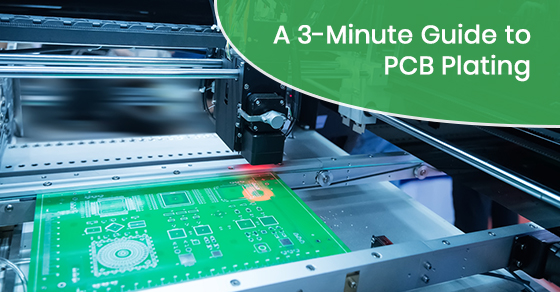A 3-Minute Guide to PCB Plating
Why did the Knights of the Round Table wear armour? To keep them protected while defending England during the 5th and 6th century. Though we don’t don armour or ride horses regularly anymore (if you’re a LARPer, we’re not judging), wrapping objects in armour to keep them safe is still common practice.
Printed circuit board (PCB) plating uses that same principle by using a protective coating to keep your circuitry safe. This is especially important when the circuit board is being used in aerospace, communications, and medical equipment. If the circuitry fails, so does the mission.
For this reason, we take PCB plating at Circuits Central very seriously. We take our time to determine the uses and environments that the hardware will be used within, and then make the best recommendation. Each composition is ideal for specific industries. Plus, it also increases the lifespan of your electronics.
What is printed circuit board plating?
Printed circuit board plating is a metal alloy coating, composed of gold, silver, copper, tin, or nickel, used to protect the PCB from wear and tear. An alloy is a compound made up of multiple metals. A common example of an alloy is brass, which is 66% copper and 34% zinc.
What plating does is increase the PCB lifespan by creating a barrier against abrasion, corrosion, dust, and heat, while still maintaining its conductivity. As mentioned, there are a number of different alloys used for PCB plating, each with their own benefits. Some are more durable, and others are more conductive. Depending on the intended purpose, we’ll recommend different options.
Popular Print Circuit Board Plating Methods
Hot Air Solder Leveling (HASL): Cost-Effective
HASL is the most popular method of plating used in the industry, with uses in both military and aerospace technology. This process consists of dipping your printed circuit board in molten solder, that is, tin and lead alloy, hence its name.
Known for its long shelf-life and durability, if you need something that can withstand heavy abrasion, extreme hot or cold temperatures, or high pressures, this may be the option for you. It is also one of the most cost-effective methods of plating.
Though there are a lot of benefits to this option, it does have some downsides. The main reason why people hesitate is that the tin/lead alloy used is not environmentally friendly. Depending on your organization, this may be nonnegotiable.
Electroless Nickel Immersion Gold (ENIG): Multi-Layered and Durable
The electroless nickel immersion gold (ENIG) method uses a two-layered approach. Think of this like a technologist’s Reese’s peanut butter cup.
According to Restriction of Hazardous Substances (RoHS) compliance, this method is safe for the environment. This means you can get the results you’re looking for, but with a clear conscience.
You may be wondering how we choose the metals to use in our alloys. In ENIG, nickel is applied as a hard metal, providing a strong base that allows the PCB to withstand more stress.
The thin layer of gold is positioned on top of the nickel to prevent oxidation and increase durability. Plus, it’s a great conductor. This is the classic circuit board that is typically seen in Hollywood films; think of any spy movie that involves breaking into a safe or digital lock.
Immersion Silver: Expensive, High Speed Signal
If you’re on the market for a high-speed circuit board option with minimal frequency loss, then immersion silver is the one for you.
Just like ENIG, this process is a two-layered method. Starting with a copper base, then coated in a silver-ion bath, the resulting product is a highly conductive circuit board. This plating method is ideal for all of your communication infrastructure needs. It’s also environmentally-friendly and RoHS compliant.
The downside is that the immersion silver method is one of the most expensive options and easily tarnishes. You’ll have to keep your PCB in protective housing at all times.
We all want our investments to last longer, upholding the integrity that we promise to our customers. Better quality PCBs and plating can help build trust with them; they now know your products are durable and well-made. Over the years, we’ve become a trusted provider of PCB production, testing, and plating. Whatever your needs are, we can help you find the right solution.
We believe everyone has the right to high quality technology, while reducing e-waste as much as we can. Send us an email or give us a call and see how we can help create tech solutions of tomorrow. For more information about how we can help protect your printed circuit boards, call Circuits Central at 888-602-7264 or contact us here.

